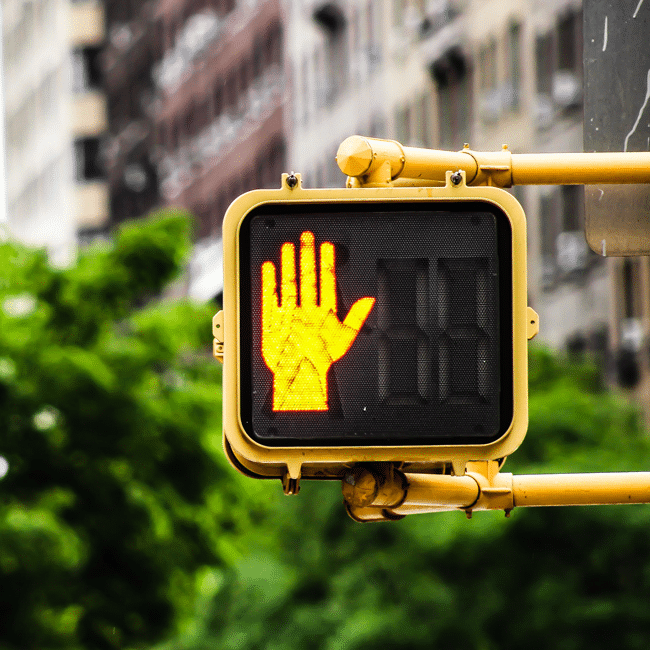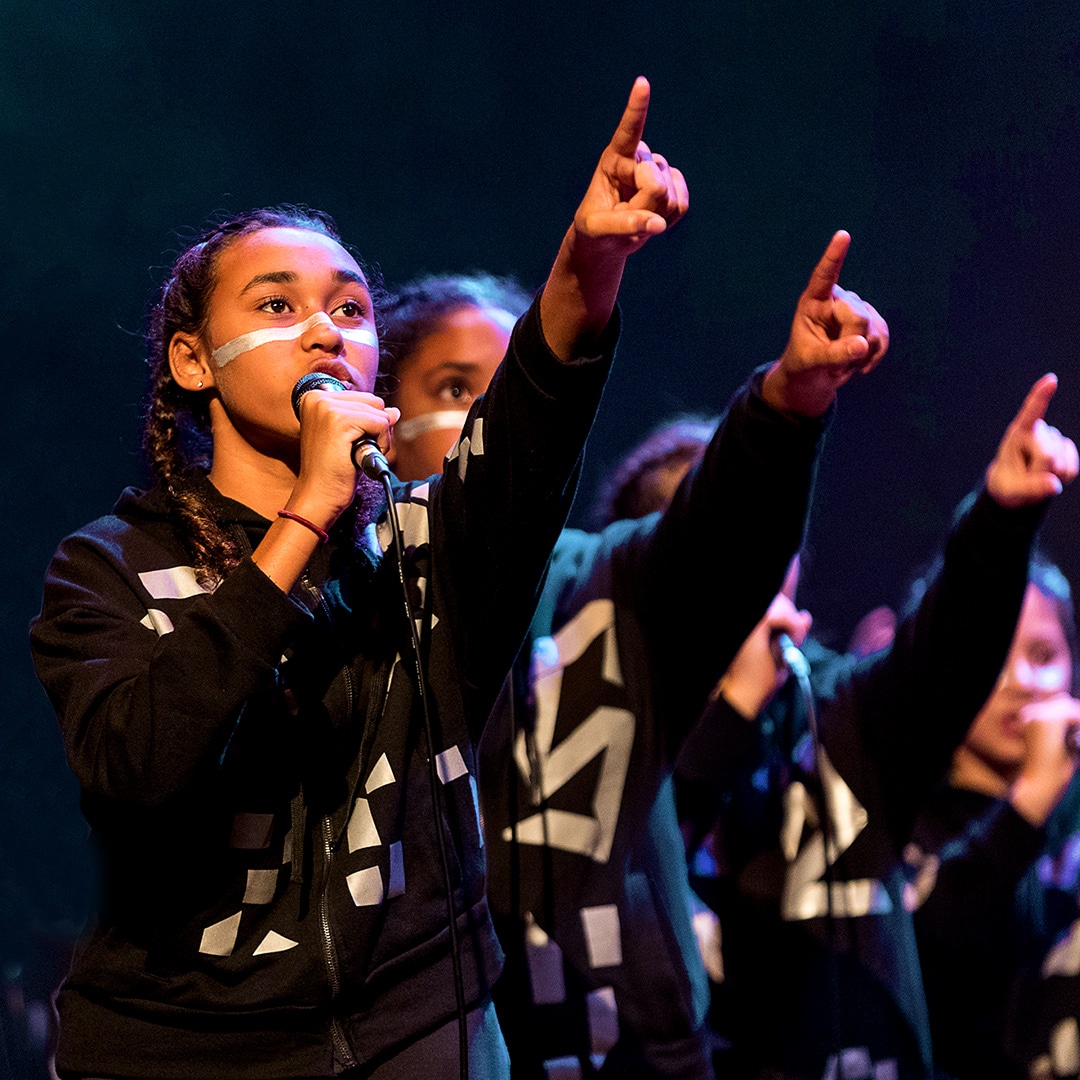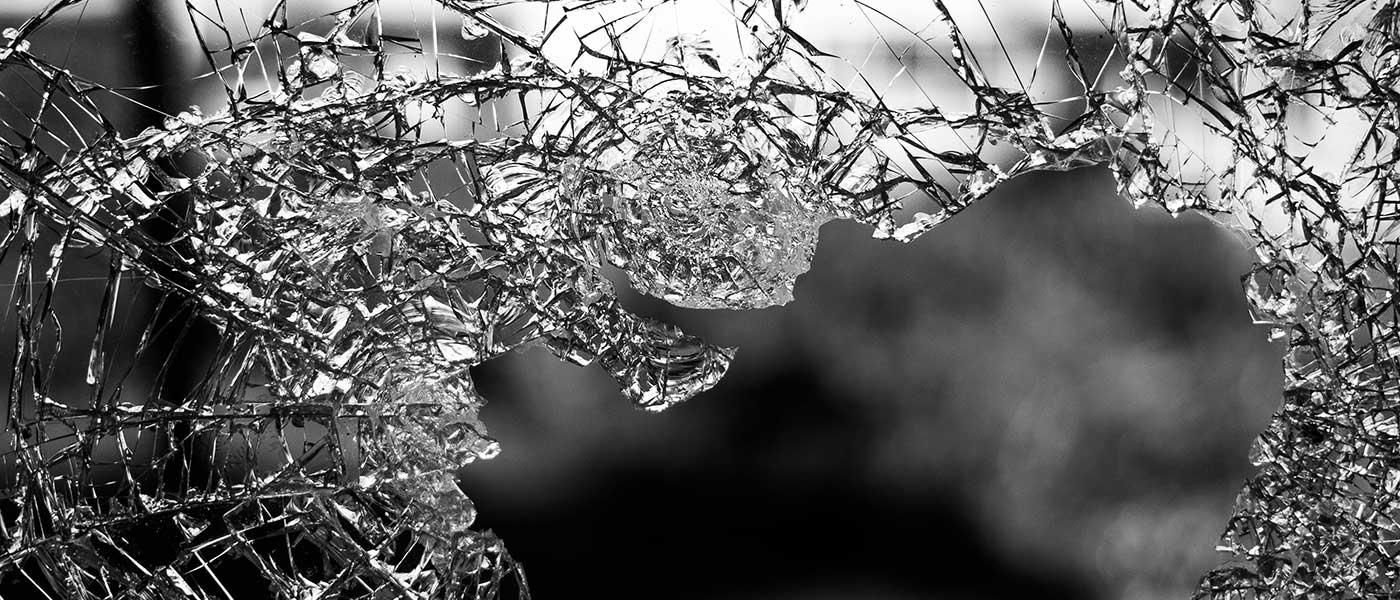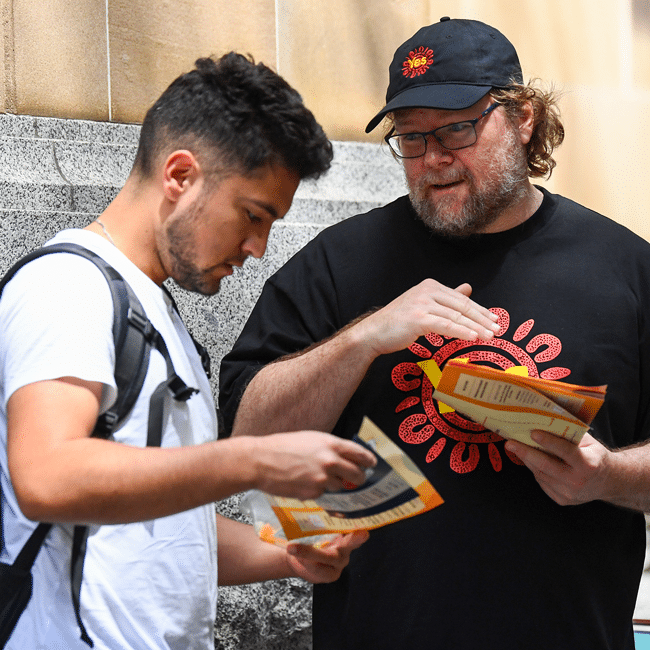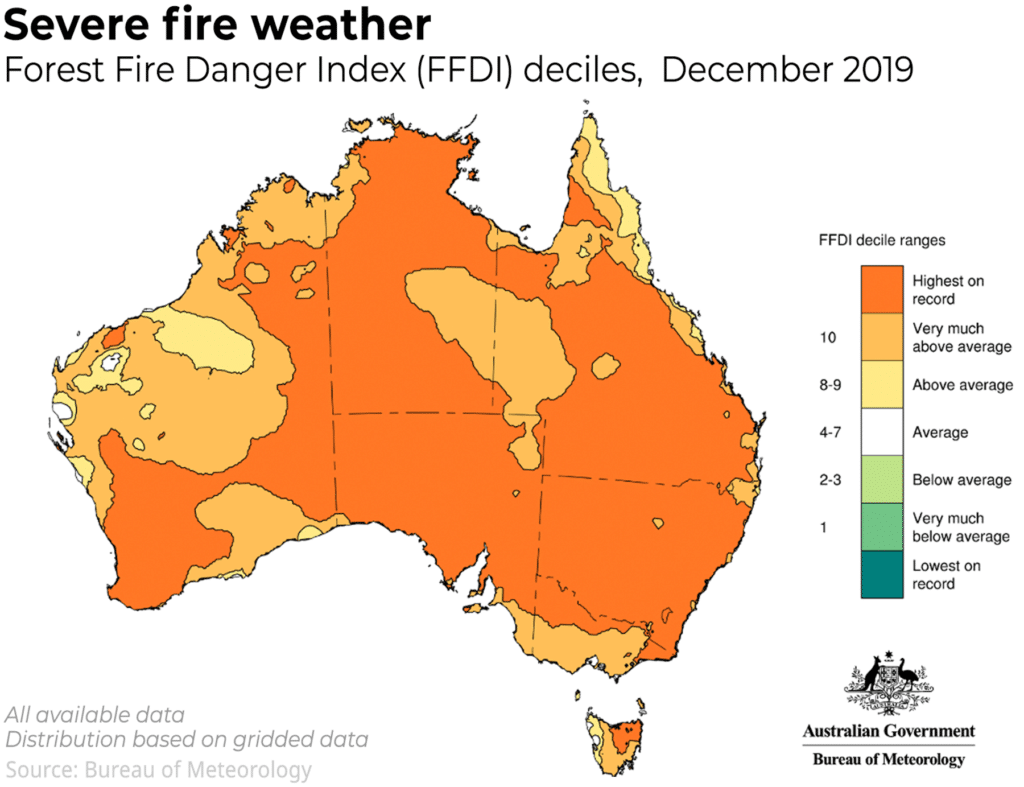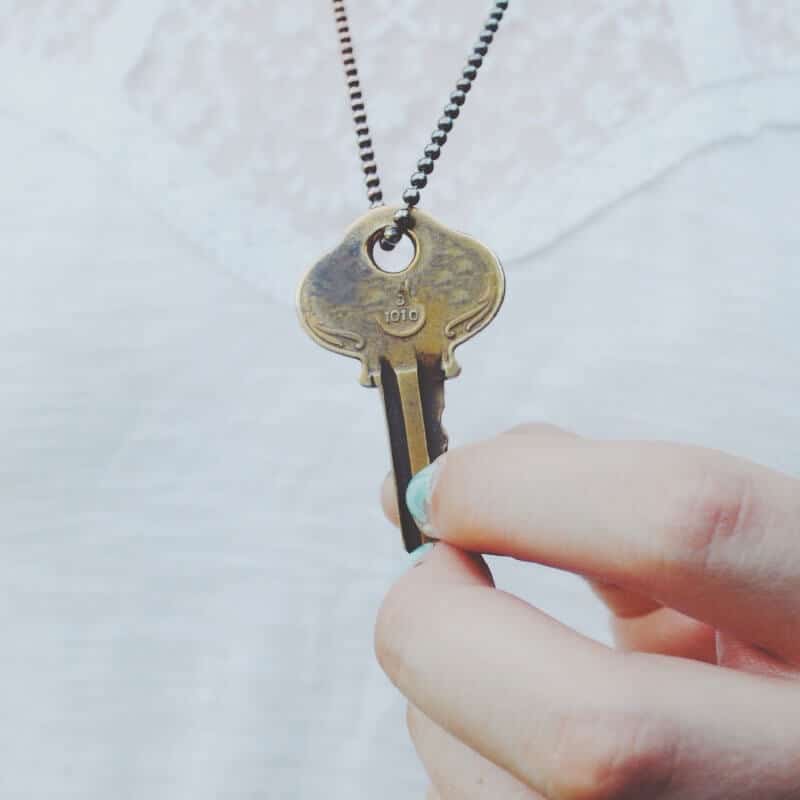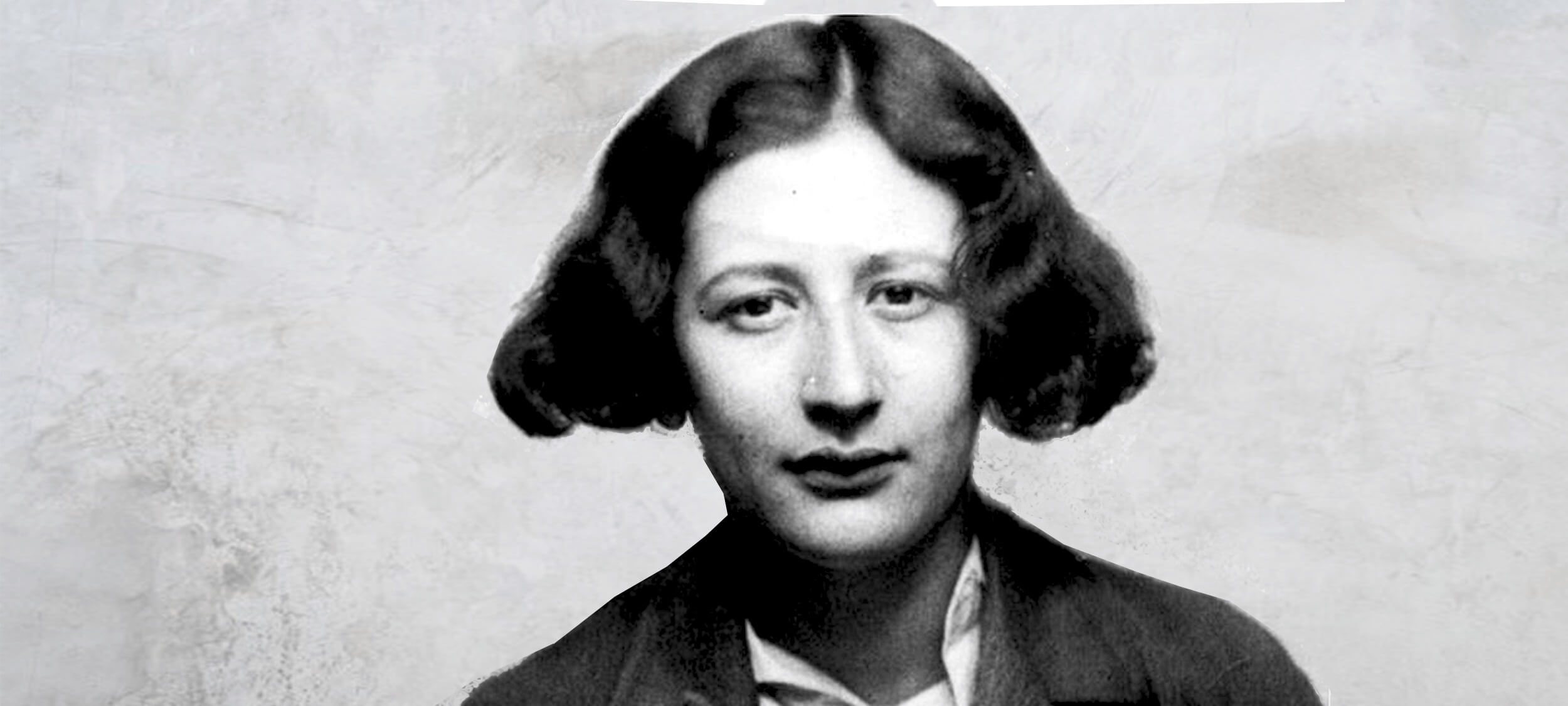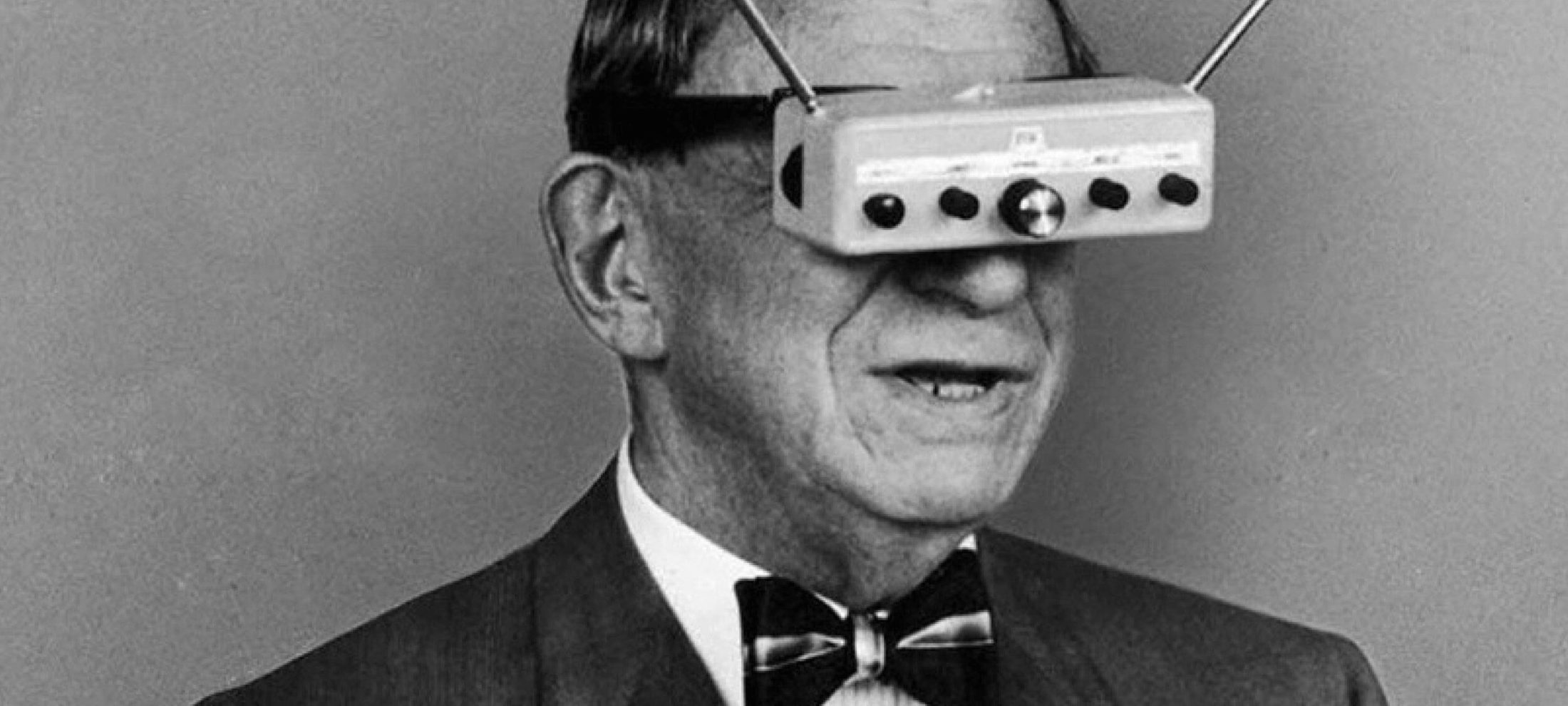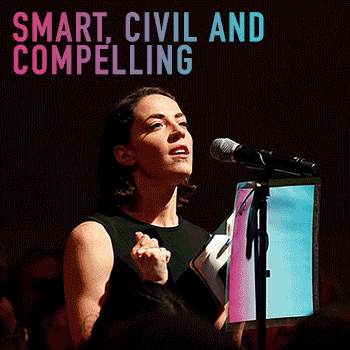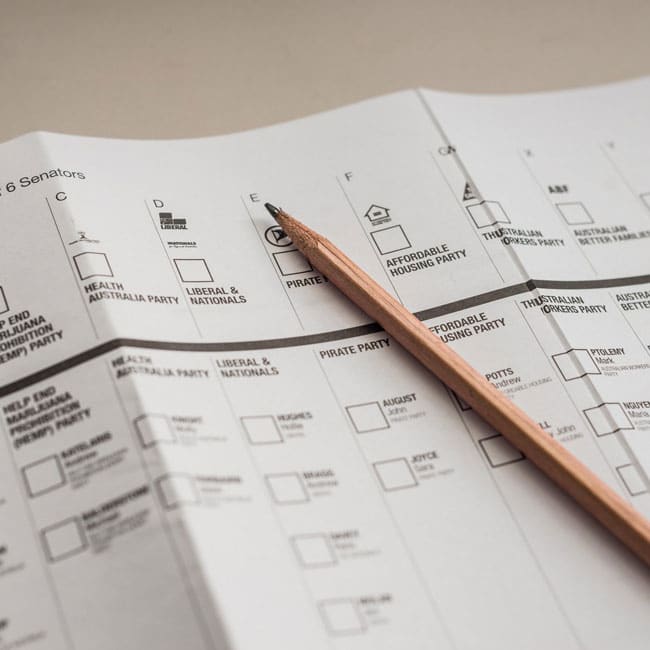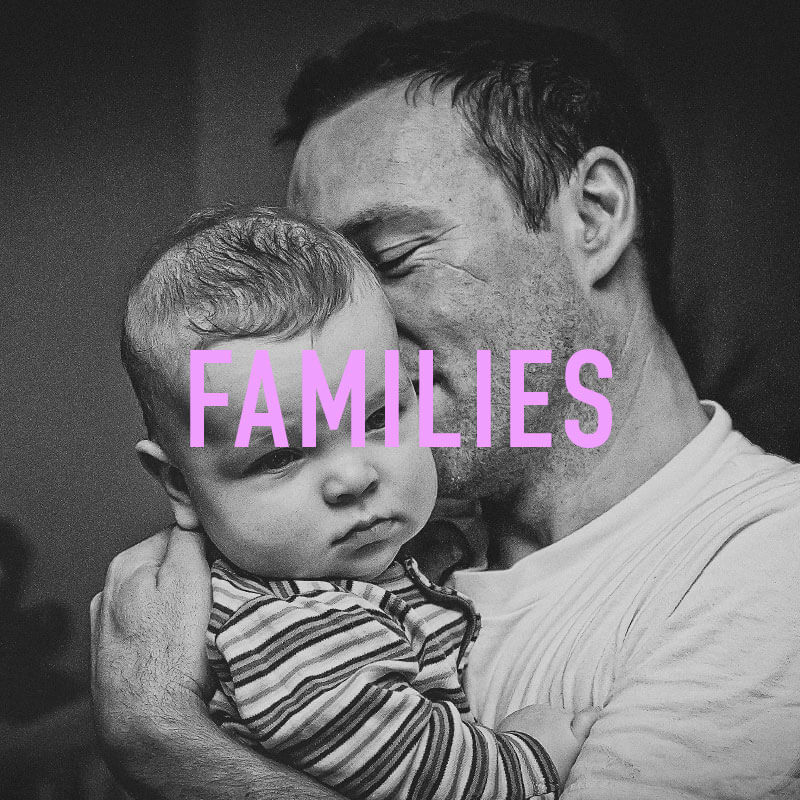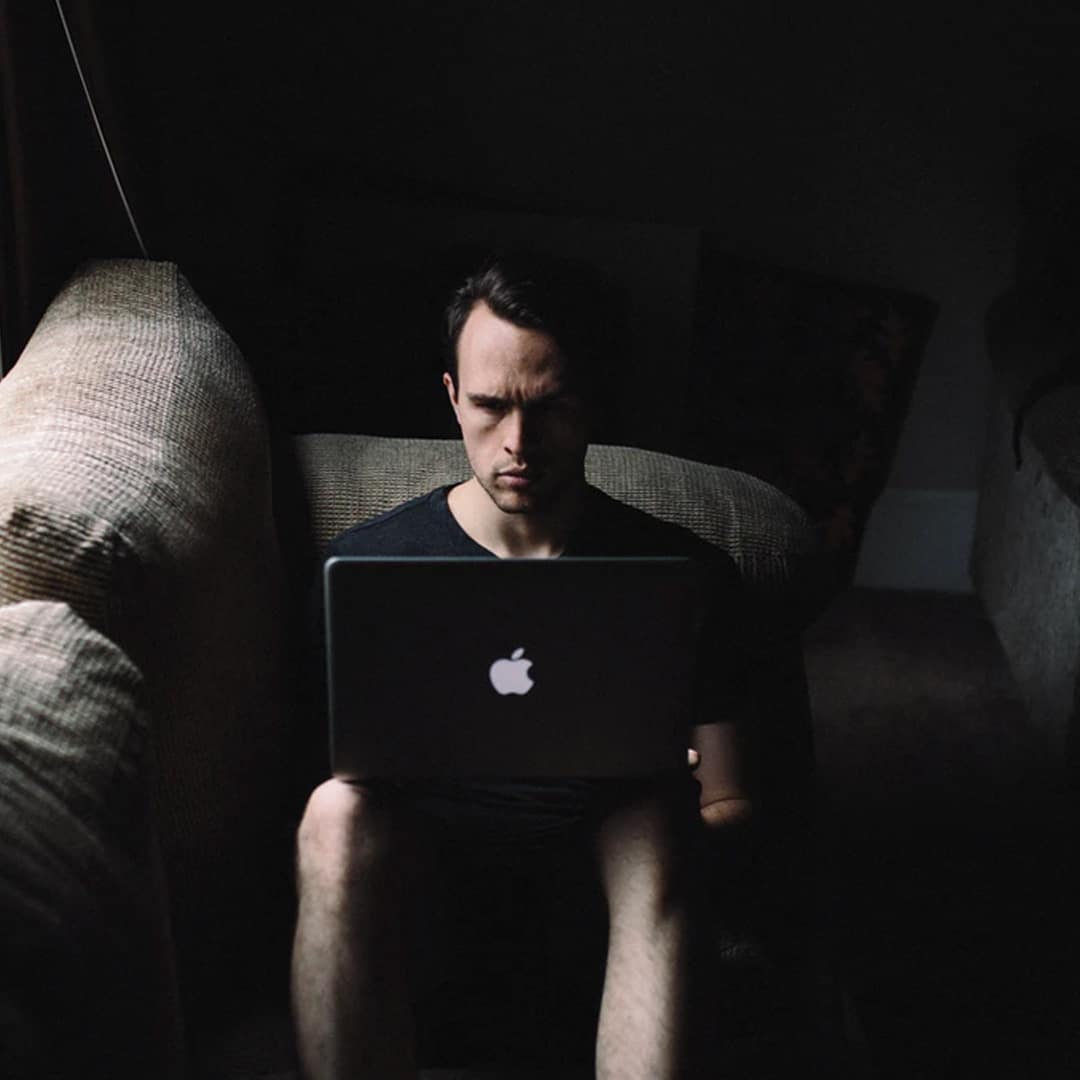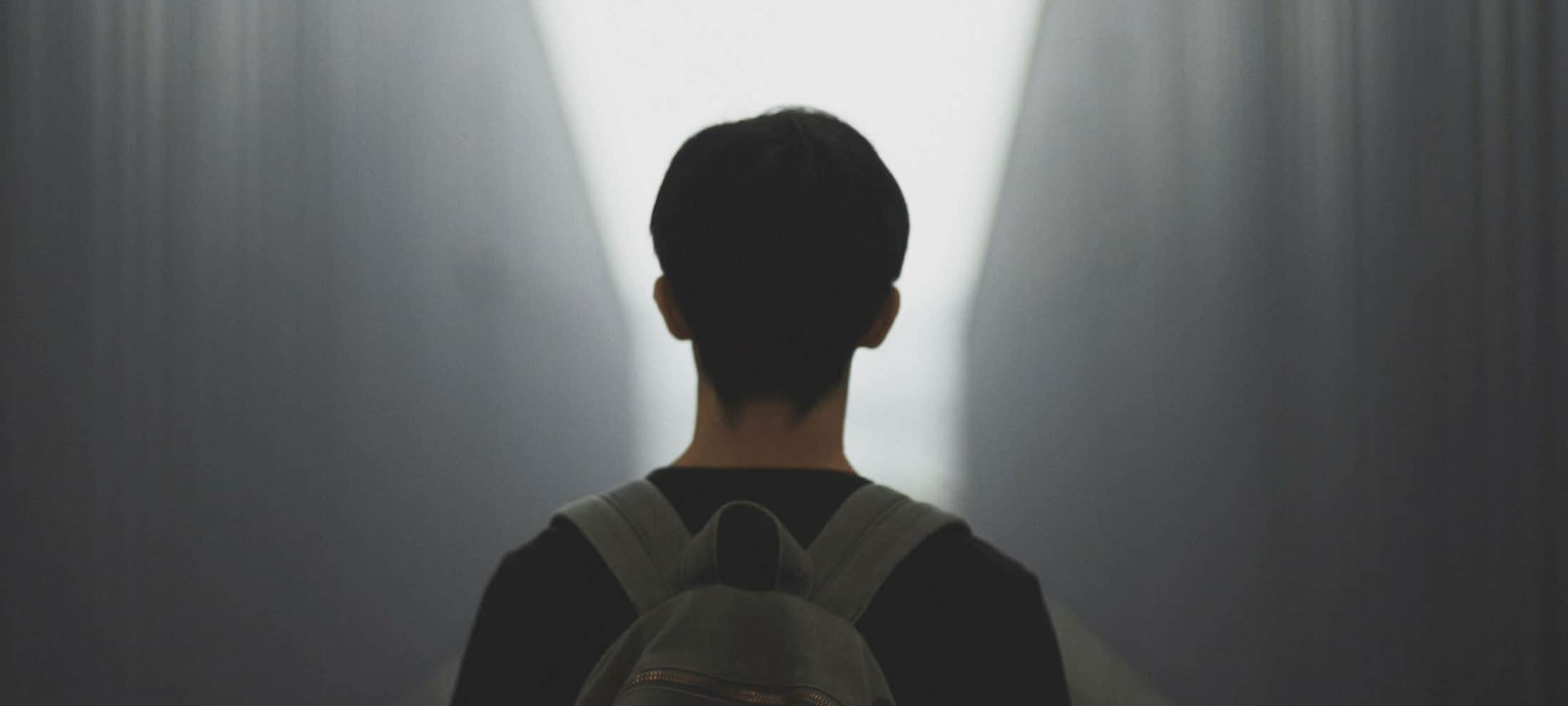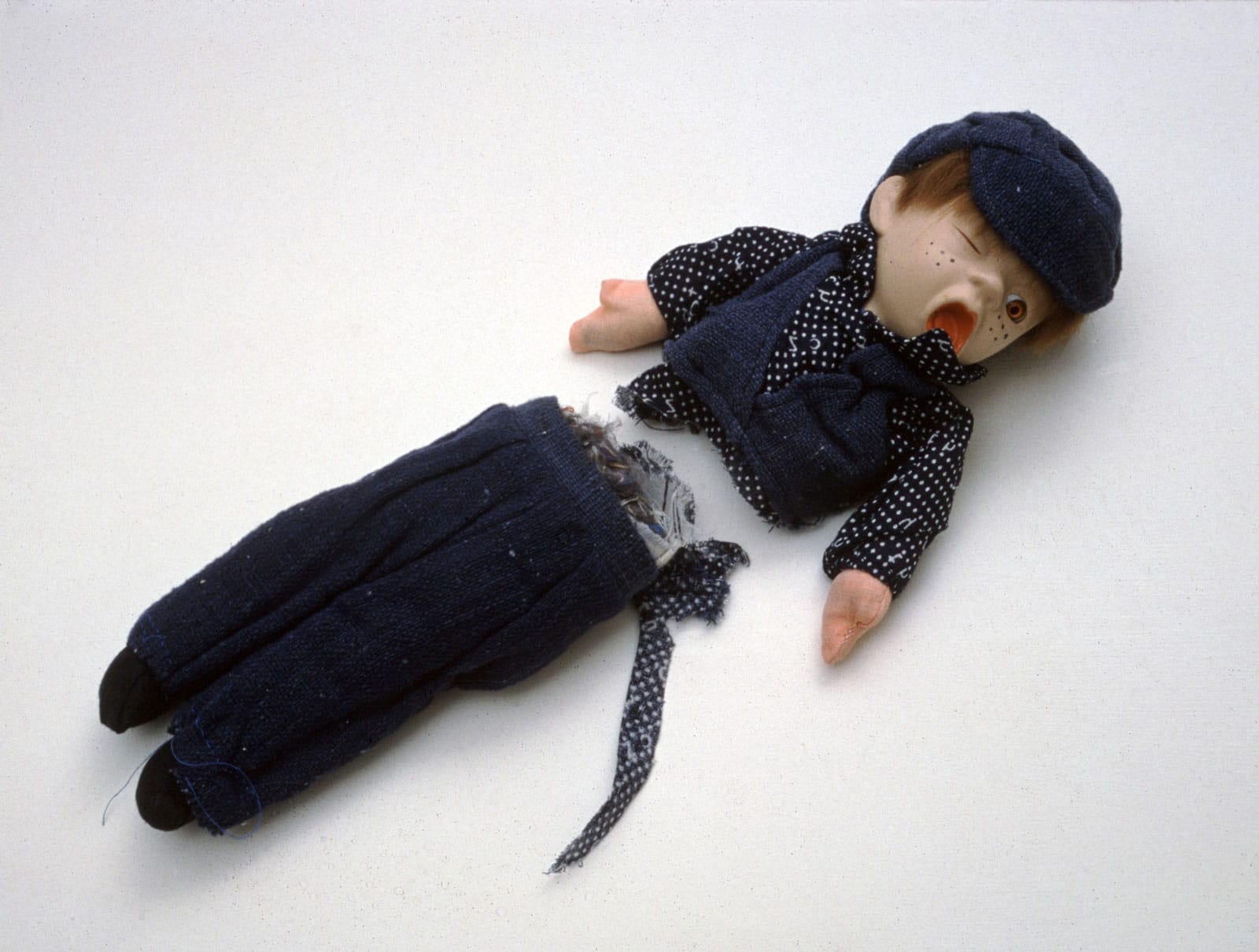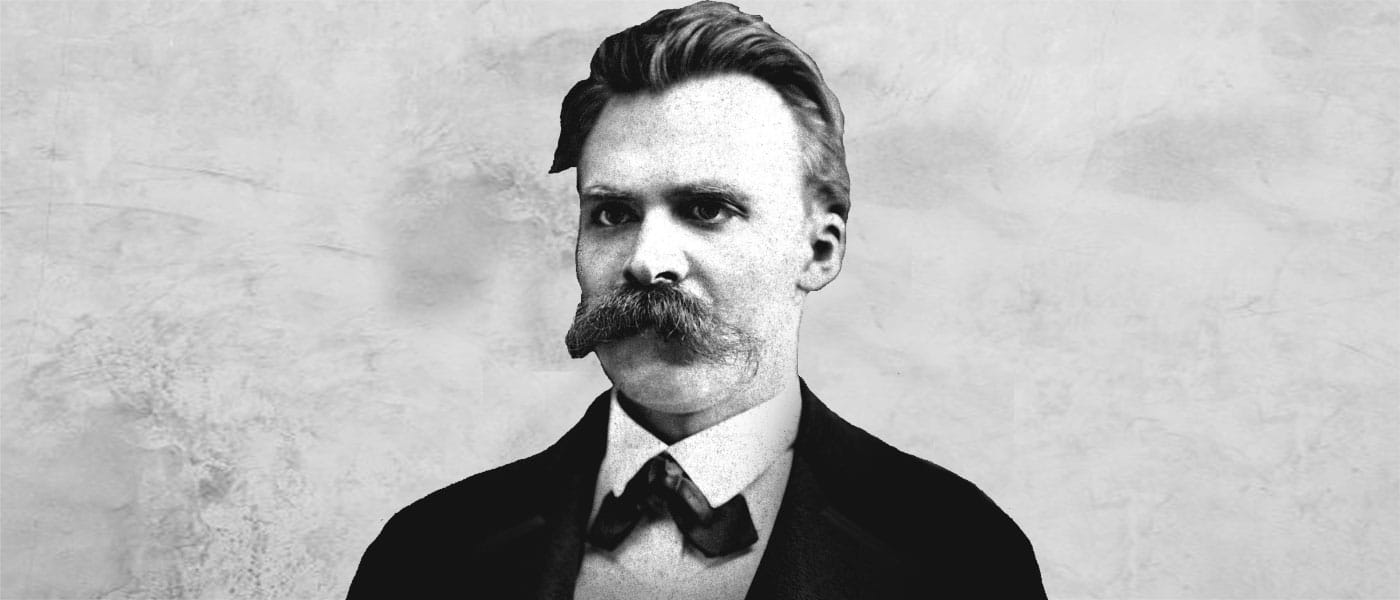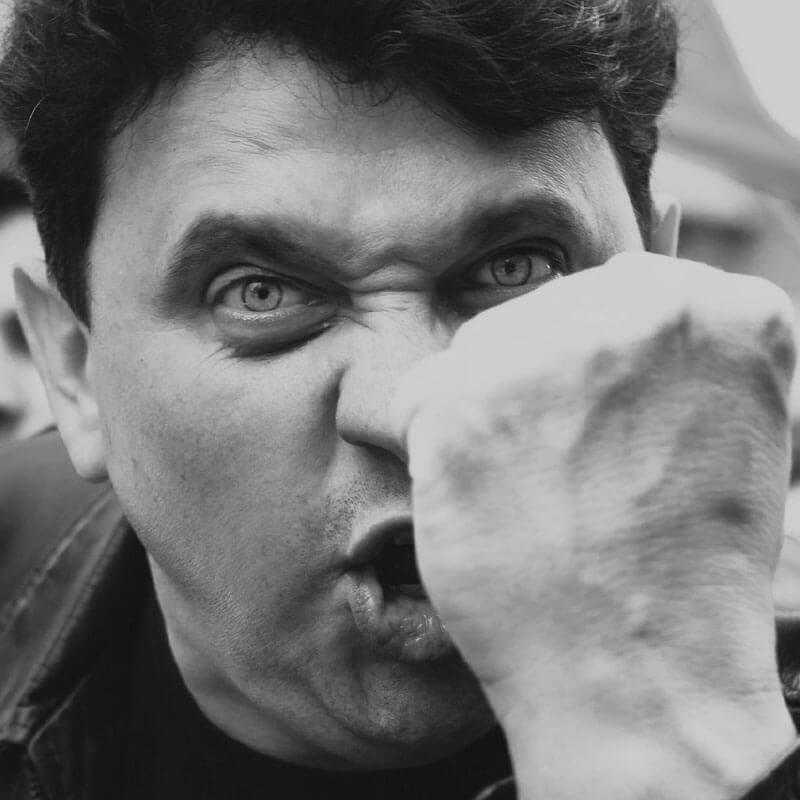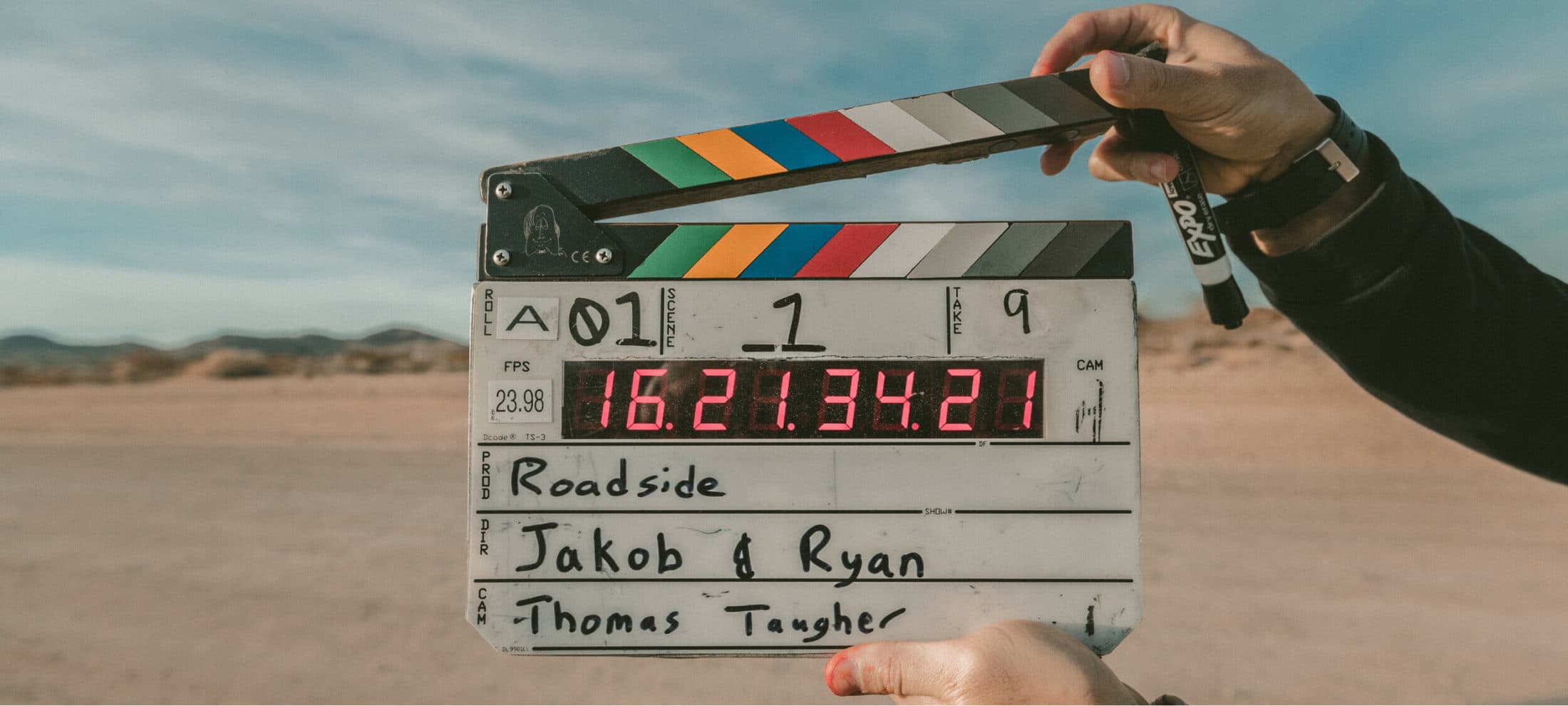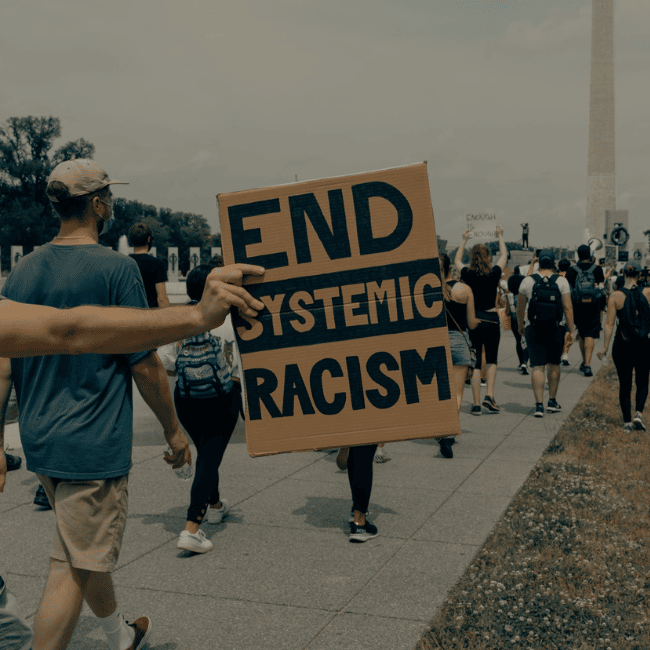McKenzie... a fractured cog in a broken wheel

McKenzie… a fractured cog in a broken wheel
Opinion + AnalysisPolitics + Human Rights
BY Simon Longstaff The Ethics Centre 18 FEB 2020
In many cases, the response to scandal is often as instructive as an assessment of its cause. So it has proved to be in the case of the issues that led to the resignation of Senator Bridget McKenzie as a Federal Government Minister.
The findings of the Auditor General unleashed a fair amount of anger and disgust – especially amongst community groups who were deemed to be meritorious recipients of funding but who missed out due to political considerations.
While I understand the outrage, strong emotions can make us blind to areas of ethical importance. As citizens, we need to notice the rapid normalisation of deviance that is eroding the foundations of our representative democracy.
In this, we should look to the insights of Edmund Burke who recognised the role played by traditions and conventions in maintaining the integrity of institutions and societies.
Those who know my writings might be surprised to find me ‘channelling’ Burke. For three decades, I have warned of the perils of unthinking custom and practice. But note that my target has always been practices and arrangements that are unthinking. I am a great admirer of customs and practices that derive their life from a conscious application of purpose, values and principles.
Too often, it is the dead hand of tradition that leads institutions to betray their underlying purposes, lose legitimacy and invite revolution. In that sense, I think that Edmund Burke and I would be in perfect accord.
I also think that Burke would be deeply concerned by the radical turn away from convention taken by the government of Prime Minister, Scott Morrison, in response to the ANAO’s ‘Sports Rort’ Report.
The government’s response has been marked by a persistent refusal to acknowledge and uphold, in practice, a couple of fundamental principles. First, that public power and monies (levied by taxes) should be used exclusively for public purposes. Second, that Ministers are responsible for all that is done in their name.
Instead, the government and its representatives have sought to distract the public by laying some false trails. They have claimed that ‘no rules were broken’. They have argued that the ‘ends justified the means’. They have suggested that the Minister should be excused from responsibility for the activities of her advisers (and possibly advisers in the offices of other ministers) who shaped decisions according to the political interests of the Coalition parties.
The fact that Senator McKenzie resigned over a ‘technical breach’ of the Ministerial Code – without any sense of remorse or censure for the way she exercised discretion in the allocation of public funds – has reinforced the public’s perception that politics and ethics have become estranged.
Just the other day someone said to me, “I can’t believe you expected anything different …”. The person then paused, in mid-sentence, and said, “Did I really just say that …? What has happened to us?”. Indeed, how have we come to accept such low standards as ‘normal’? When will we realise that we are being robbed of our reasonable expectations as citizens in a democracy?
Our government’s behaviour may deserve moral censure. However, we should not let this obscure the fact that its response to the ‘Sports Rort’ reveals a woeful lack of commitment to the preconditions for a functioning representative democracy. It is this, more than anything else, that should really worry us.
“Our government’s behaviour may deserve moral censure. However, we should not let this obscure the fact that its response to the ‘Sports Rort’ reveals a woeful lack of commitment to the preconditions for a functioning representative democracy.”
One result of a lack of clear commitment to ethics within government has been the growing demand for a Federal Integrity Commission. The idea is popular with the general public – who are sick of being held accountable for their conduct while watching the most powerful people in the nation letting each other off the hook. Given this, the major political parties are committed to the creation of this new, independent oversight body.
Personally, I think it incredibly sad that it has come to this. That multiple generations of politicians, from across the political spectrum, have made this necessary is an indictment of their stewardship of our democratic institutions.
However, if it is to be done, then it must be done well. There is no point in the Parliament putting in place a ‘paper tiger’ limited to reviewing the most extreme cases of ethical failure by the smallest possible subset of public officials. It is for that reason, I support the Beechworth Principles which were launched this week.
We deserve governments that earn our trust and preserve their legitimacy. Is that really too much to ask of our politicians?
Ethics in your inbox.
Get the latest inspiration, intelligence, events & more.
By signing up you agree to our privacy policy
You might be interested in…
Opinion + Analysis
Society + Culture, Politics + Human Rights
Who gets heard? Media literacy and the politics of platforming
Opinion + Analysis
Politics + Human Rights
We are witnessing just how fragile liberal democracy is – it’s up to us to strengthen its foundations
Opinion + Analysis
Politics + Human Rights
An angry electorate
Opinion + Analysis
Politics + Human Rights, Society + Culture
Why sometimes the right thing to do is nothing at all
BY Simon Longstaff
Simon Longstaff began his working life on Groote Eylandt in the Northern Territory of Australia. He is proud of his kinship ties to the Anindilyakwa people. After a period studying law in Sydney and teaching in Tasmania, he pursued postgraduate studies as a Member of Magdalene College, Cambridge. In 1991, Simon commenced his work as the first Executive Director of The Ethics Centre. In 2013, he was made an officer of the Order of Australia (AO) for “distinguished service to the community through the promotion of ethical standards in governance and business, to improving corporate responsibility, and to philosophy.” Simon is an Adjunct Professor of the Australian Graduate School of Management at UNSW, a Fellow of CPA Australia, the Royal Society of NSW and the Australian Risk Policy Institute.
BY The Ethics Centre
The Ethics Centre is a not-for-profit organisation developing innovative programs, services and experiences, designed to bring ethics to the centre of professional and personal life.
The youth are rising. Will we listen?

The youth are rising. Will we listen?
Opinion + AnalysisClimate + EnvironmentPolitics + Human RightsRelationshipsSociety + Culture
BY Danielle Harvey The Ethics Centre 18 FEB 2020
When we settled on Town Hall as the venue for the Festival of Dangerous Ideas (FODI) 2020, my first instinct was to consider a choir. The venue lends itself to this so perfectly and the image of a choir – a group of unified voices – struck me as an excellent symbol for the activism that is defining our times.
I attended Spinifex Gum in Melbourne last year, and instantly knew that this was the choral work for the festival this year. The music and voices were incredibly beautiful but what struck me most was the authenticity of the young women in Marliya Choir. The song cycle created by Felix Riebel and Lyn Gardner for Marliya Choir embarks on a truly emotional journey through anger, sadness, indignation and hope.
A microcosm of a much larger phenomenon, Marliya’s work shows us that within these groups of unified voices the power of youth is palpable.
Every city, suburb and school has their own Greta Thurnbergs: young people acutely aware of the dangerous reality we are now living in, who are facing the future knowing that without immediate and significant change their future selves will risk incredible hardship.
In 2012, FODI presented a session with Shiv Malik and Ed Howker on the coming inter-generational war, and it seems this war has well and truly begun. While a few years ago the provocations were mostly around economic power, the stakes have quickly risen. Now power, the environment, quality of life, and the future of the planet are all firmly on the table. This has escalated faster than our speakers in 2012 were predicting.
For a decade now the FODI stage has been a place for discussing uncomfortable truths. And it doesn’t get more uncomfortable than thinking about the future world and systems the young will inherit.
What value do we place on a world we won’t be participating in?
Our speakers alongside Marliya Choir will be tackling big issues from their perspective: mental health, gender, climate change, indigenous incarceration, and governance.
First Nation Youth Activist Dujuan Hoosan, School Strike for Climate’s Daisy Jeffery, TEDx speaker Audrey Mason-Hyde , mental health advocate Seethal Bency and journalist Dylan Storer add their voices to this choir of young Australians asking us to pay attention.
Aged from 12 to 21, their courage in stepping up to speak in such a large forum is to be commended and supported.
With a further FODI twist, you get to choose how much you wish to pay for this session. You choose how important you think it is to listen to our youth. What value do you put on the opinions of the young compared to our established pundits?
Unforgivable is a new commission, combining the music from the incredible Spinifex Gum show I saw, with new songs from the choir and some of the boldest young Australian leaders, all coming together to share their hopes and fears about the future.
It is an invitation to come and to listen. To consider if you share the same vision of the future these young leaders see. Unforgivable is an opportunity to see just what’s at stake in the war that is raging between young and old.
These are not tomorrow’s leaders, these young people are trying to lead now.
Tickets to Unforgivable, at the Festival of Dangerous Ideas on Saturday 4 April are on sale now.
Ethics in your inbox.
Get the latest inspiration, intelligence, events & more.
By signing up you agree to our privacy policy
You might be interested in…
Opinion + Analysis
Business + Leadership, Politics + Human Rights, Society + Culture
Corruption, decency and probity advice
Opinion + Analysis
Society + Culture, Politics + Human Rights
‘The Zone of Interest’ and the lengths we’ll go to ignore evil
Explainer
Climate + Environment
Ethics Explainer: Longtermism
Opinion + Analysis
Relationships
Now is the time to talk about the Voice
BY Danielle Harvey
Danielle Harvey is Festival Director of the Festival of Dangerous Ideas. A curator, creative producer and director, Harvey works across live performance, talks, installation, and digital spaces, creating layered programs that connect deeply with audiences.
BY The Ethics Centre
The Ethics Centre is a not-for-profit organisation developing innovative programs, services and experiences, designed to bring ethics to the centre of professional and personal life.
This is what comes after climate grief

This is what comes after climate grief
Opinion + AnalysisClimate + EnvironmentPolitics + Human RightsRelationships
BY Ketan Joshi The Ethics Centre 21 JAN 2020
I can’t really lie about this. Like so many other people in the climate community hailing from Australia, I expected the impacts of climate change to come later. I didn’t define ‘later’ as much other than ‘not now, not next year, but some time after that’.
Instead, I watched in horror as Australia burst into flames. As the worst of the fire season passes, a simple question has come to the fore. What made these bushfires so bad?
The Bureau of Meteorology confirms that weather conditions have been tilting in favour of worsening fire for many decades. The ‘Forest Fire Danger Index’, a metric for this, hit records in many parts of Australia, this summer.
The Earth Systems and Climate Change Hub is unequivocal: “Human-caused climate change has resulted in more dangerous weather conditions for bushfires in recent decades for many regions of Australia…These trends are very likely to increase into the future”.
Bushfire has been around for centuries, but the burning of fossil fuels by humans has catalysed and worsened it.
Having moved away from Australia, I didn’t experience the physical impacts of the crisis. Not the air thick with smoke, or the dark brown sky or the bone-dry ground.
But I am permanently plugged into the internet, and the feelings expressed there fed into my feed every day. There was shock at the scale and at the science fictionness of it all. Fire plumes that create their own lightning? It can’t be real.
The world grieved at the loss of human life, the loss of beautiful animals and ecosystems, and the permanent damage to homes and businesses.
Rapidly, that grief pivoted into action. The fundraisers were numerous and effective. Comedian Celeste Barber, who set out to raise an impressive $30,000 AUD, ended up at around $51 million. Erin Riley’s ‘Find a Bed’ program worked tirelessly to help displaced Australians find somewhere to sleep. Australians put their heads down and got to work.
It’s inspiring to be a part of. But that work doesn’t stop with funding. Early estimates on the emissions produced by the fires are deeply unsettling. “Our preliminary estimates show that by now, CO2 emissions from this fire season are as high or higher than the CO2 emissions from all anthropogenic emissions in Australia. So effectively, they are at least doubling this year’s carbon footprint of Australia”, research scientist Pep Canadell told Future Earth.
There is some uncertainty about whether the forests destroyed by the blaze will grow back and suck that released carbon back into the Earth. But it is likely that as fire seasons get worse, the balance of the natural flow of carbon between the ground and the sky will begin to tip in a bad direction.
Like smoke plumes that create their own ‘dry lightning’ that ignite new fires, there is a deep cyclical horror to the emissions of bushfire.
It taps into a horror that is broader and deeper than the immediate threat; something lingers once the last flames flicker out. We begin to feel that the planet’s physical systems are unresponsive. We start to worry that if we stopped emissions, these ‘positive feedbacks’ (a classic scientific misnomer) mean we’re doomed regardless of our actions.
“An epidemic of giving up scares me far more than the predictions of climate scientists”, I told an international news journalist, as we sat in a coffee shop in Oslo. It was pouring rain, and it was warm enough for a single layer and a raincoat – incredibly strange for the city in January.
She seemed surprised. “That scares you?” she asked, bemused. Yes. If we give up, emissions become higher than they would be otherwise, and so we are more exposed to the uncertainties and risks of a planet that starts to warm itself. That is paralysing, to me.
It is scarier than the climate change denial of the 2010s, because it has far greater mass appeal. It’s just as pseudoscientific as denialism. “Climate change isn’t a cliff we fall off, but a slope we slide down”, wrote climate scientist Kate Marvel, in late 2018.
In response to Jonathan Franzen’s awful 2019 essay in which he urges us to give up, Marvel explained why ‘positive feedbacks’ are more reason to work hard to reduce emissions, not less. “It is precisely the fact that we understand the potential driver of doom that changes it from a foregone conclusion to a choice”.
A choice. Just as the immediate horrors of the fires translated into copious and unstoppable fundraising, the longer-term implications of this global shift in our habitat could precipitate aggressive, passionate action to place even more pressure on the small collection of companies and governments that are contributing to our increasing danger.
There are so many uncertainties inherent in the way the planet will respond to a warming atmosphere. I know, with absolute certainty, that if we succumb to paralysis and give up on change, then our exposure to these risks will increase greatly.
We can translate the horror of those dark red months into a massive effort to change the future. Our worst fears will only be realised if we persist with the intensely awful idea that things are so bad that we ought to give up.
Ethics in your inbox.
Get the latest inspiration, intelligence, events & more.
By signing up you agree to our privacy policy
You might be interested in…
WATCH
Relationships
Unconscious bias
Explainer
Business + Leadership, Climate + Environment
Ethics Explainer: Ownership
Opinion + Analysis
Politics + Human Rights, Relationships
Would you kill baby Hitler?
Explainer
Relationships
Ethics Explainer: Agape
BY Ketan Joshi
Was a speaker at IQ2: It's too soon to ditch fossil fuels. He is a science communicator with over eight years experience across The Monthly, Gizmodo, Cosmos and with the CSIRO.
BY The Ethics Centre
The Ethics Centre is a not-for-profit organisation developing innovative programs, services and experiences, designed to bring ethics to the centre of professional and personal life.
Extending the education pathway

Extending the education pathway
Opinion + AnalysisBusiness + LeadershipRelationshipsSociety + Culture
BY The Ethics Centre 16 JAN 2020
In the course of 2019, The Ethics Centre reviewed and adopted a new strategy for the five years to 2024.
The key insight to emerge from the strategic planning process was that the Centre should focus on growing its impact through innovation, partnerships, platforms and pathways.
We focus here on just one of those factors – ‘pathways’ and, in particular, the education pathway.
The Ethics Centre is not new to the education game. To this day, the establishment of Primary Ethics – which teaches tens of thousands of primary students every week in NSW – is one of our most significant achievements.
As Primary Ethics continues to break new ground, we feel it’s time to bring our collective skills to bear along the broader education pathway.
With this in mind, we’re delighted to report that The Ethics Centre and NSW Department of Education and Training have signed a partnership to develop curriculum resources and materials to support the teaching and learning of ethical deliberation skills in NSW schools, including within existing key learning areas.
This exciting project will see us working with and through the Department’s Catalyst Innovation Lab alongside gifted teachers and curriculum experts – rather than merely seeking to influence from the outside.
In addition, we have also formed a further partnership with one of the Centre’s Ethics Alliance members, Knox Grammar School. This will involve the establishment of an ‘Ethicist-in-residence’ at the school, the application of new approaches to exploring ethical challenges faced by young adults, and the development of a pilot program where students in their final years of secondary education undertake an ethics fellowship at the Centre.
In due course, we hope that the work pioneered in these two partnerships and others will produce scalable platforms that can be extended across Australia. Detailed plans come next, and we believe the potential for impact along this pathway is significant.
We believe ethics education is a central component of lifelong learning – extending from the earliest days of schooling through secondary schooling, higher education and into the workplace.
The broadening of the education pathway therefore provides new opportunities for The Ethics Centre and Primary Ethics to work together – sharing our complementary skills and experience in service of our shared objectives, for the common good.
If you have an interest in supporting this work, at any point along the pathway, then please contact Dr Simon Longstaff at The Ethics Centre, or Evan Hannah, who leads the team at Primary Ethics.
Dr Simon Longstaff is Executive Director of The Ethics Centre: www.ethics.org.au
Evan Hannah can be contacted via Primary Ethics at: www.primaryethics.com.au
Ethics in your inbox.
Get the latest inspiration, intelligence, events & more.
By signing up you agree to our privacy policy
You might be interested in…
Explainer
Relationships
Ethics Explainer: Progressivism
Opinion + Analysis
Politics + Human Rights, Relationships
Standing up against discrimination
Big thinker
Relationships
Big Thinker: Simone Weil
Opinion + Analysis
Health + Wellbeing, Relationships, Science + Technology
When do we dumb down smart tech?
BY The Ethics Centre
The Ethics Centre is a not-for-profit organisation developing innovative programs, services and experiences, designed to bring ethics to the centre of professional and personal life.
A burning question about the bushfires

A burning question about the bushfires
Opinion + AnalysisClimate + EnvironmentPolitics + Human RightsRelationships
BY Simon Longstaff The Ethics Centre 16 JAN 2020
At the height of the calamity that has been the current bushfire season, people demanded to know why large parts of our country were being ravaged by fires of a scale and intensity seldom seen.
In answer, blame has been sheeted home to the mounting effects of climate change, to failures in land management, to our burgeoning population, to the location of our houses, to the pernicious deeds of arsonists…
However, one thing has not made the list, ethical failure.
I suspect that few people have recognised the fires as examples of ethical failure. Yet, that is what they are. The flames were fuelled not just by high temperatures, too little rain and an overabundance of tinder-dry scrub. They were also the product of unthinking custom and practice and the mutation of core values and principles into their ‘shadow forms’.
Bushfires are natural phenomena. However, their scale and frequency are shaped by human decisions. We know this to be true through the evidence of how Indigenous Australians make different decisions – and in doing so – produce different effects.
Our First Nations people know how to control fire and through its careful application help the country to thrive. They have demonstrated (if only we had paid attention) that there was nothing inevitable about the destruction unleashed over the course of this summer. It was always open to us to make different choices which, in turn, would have led to different outcomes.
This is where ethics comes in. It is the branch of philosophy that deals with the character and quality of our decisions; decisions that shape the world. Indeed, constrained only by the laws of nature, the most powerful force on this planet is human choice. It is the task of ethics to help people make better choices by challenging norms that tend to be accepted without question.
This process asks people to go back to basics – to assess the facts of the matter, to challenge assumptions, to make conscious decisions that are informed by core values and principles. Above all, ethics requires people to accept responsibility for their decisions and all that follows.
This catastrophe was not inevitable. It is a product of our choices.
For example, governments of all persuasions are happy to tell us that they have no greater obligation than to keep us safe. It is inconceivable that our politicians would ignore intelligence suggesting that a terrorist attack might be imminent. They would not wait until there was unanimity in the room. Instead, our governments would accept the consensus view of those presenting the intelligence and take preventative action.
So, why have our political leaders ignored the warnings of fire chiefs, defence analysts and climate scientists? Why have they exposed the community to avoidable risks of bushfires? Why have they played Russian Roulette with our future?
It can only be that some part of society’s ‘ethical infrastructure’ is broken.
In the case of the fires, we could have made better decisions. Better decisions – not least in relation to the challenges of global emissions, climate change, how and where we build our homes, etc. – will make a better world in which foreseeable suffering and destruction is avoided. That is one of the gifts of ethics.
Understood in this light, there is nothing intangible about ethics. It permeates our daily lives. It is expressed in phenomena that we can sense and feel.
So, if anyone is looking for a physical manifestation of ethical failure – breathe the smoke-filled air, see the blood-red sky, feel the slap from a wall of heat, hear the roar of the firestorm.
The fires will subside. The rains will come. The seasons will turn. However, we will still be left to decide for the future. Will our leaders have the moral courage to put the public interest before their political fortunes? Will we make the ethical choice and decide for a better world?
It is our task, at The Ethics Centre, to help society do just that.
Ethics in your inbox.
Get the latest inspiration, intelligence, events & more.
By signing up you agree to our privacy policy
You might be interested in…
Opinion + Analysis
Politics + Human Rights, Health + Wellbeing, Society + Culture
I changed my mind about prisons
Opinion + Analysis
Politics + Human Rights
Ask an ethicist: Why should I vote when everyone sucks?
Opinion + Analysis
Politics + Human Rights, Relationships
Who’s your daddy?
Opinion + Analysis
Health + Wellbeing, Relationships, Science + Technology
When do we dumb down smart tech?
BY Simon Longstaff
Simon Longstaff began his working life on Groote Eylandt in the Northern Territory of Australia. He is proud of his kinship ties to the Anindilyakwa people. After a period studying law in Sydney and teaching in Tasmania, he pursued postgraduate studies as a Member of Magdalene College, Cambridge. In 1991, Simon commenced his work as the first Executive Director of The Ethics Centre. In 2013, he was made an officer of the Order of Australia (AO) for “distinguished service to the community through the promotion of ethical standards in governance and business, to improving corporate responsibility, and to philosophy.” Simon is an Adjunct Professor of the Australian Graduate School of Management at UNSW, a Fellow of CPA Australia, the Royal Society of NSW and the Australian Risk Policy Institute.
BY The Ethics Centre
The Ethics Centre is a not-for-profit organisation developing innovative programs, services and experiences, designed to bring ethics to the centre of professional and personal life.
The virtues of Christmas

The virtues of Christmas
Opinion + AnalysisHealth + Wellbeing
BY John Neil The Ethics Centre 20 DEC 2019
Christmas is upon us. It’s a time of giving. A time for celebrating with family and love ones. And a time to navigate a number of sticky ethical challenges.
It starts early in the morning; the gifts are distributed, and you unwrap Grandma’s exquisitely wrapped parcel only to reveal a hideous pair of underwear that may have once been in fashion during the great depression. You immediately call on your best poker face, but it may have already betrayed your disappointment. Should you lie and say, ‘thanks Nan, I really love them?’
Next comes the Christmas lunch tirade; you’re seated next to an opinionated uncle you only see once a year at Christmas who, predictably, after too many of his favourite Christmas beverages begins an annual festive diatribe that escalates rapidly from the opinionated to the offensive. Do you speak your mind?
Finally, the inevitable clash with your mother in law; she cannot help being critical about everything surrounding the festivities. The inevitable flare-up will happen after clearing away lunch, which you like to refer to it as the annual arm wrestle, a well-worn conflict over everything from how to stack the dishwasher to how the kids can and cannot play. This year will no doubt be worse as you are hosting the event. Do you stand your ground?
Most of us ask “What should I do?” when we think about ethics. However, we can approach it another way by asking, “What kind of person should I be?” Philosophical thinkers in this tradition turn to virtue ethics for the answers.
While it’s one thing to ask what kind of person should I be, it’s another thing to know how to live as that person. For Aristotle the answer to both of these questions is to act virtuously. Acting as though we already possess the best virtues is how we develop a virtuous character.
And if ever there was a time to test out the virtues of our character, it’s Christmas.
Virtue ethics, unlike other approaches, does not provide specific rules for addressing ethical questions. Instead, good actions are those that a person of good character would display. Aristotle, one of the most influential philosophers in this tradition, developed a comprehensive system of virtue ethics.
Let’s take a look at how it can help us navigate the minefield of Christmas’ annual dilemmas.
The underwear from Grandma? If asking what should you do, you might take a lead from consequentialism. You could simply smile and say ‘I love it Grandma’. After all, she meant well, a white lie makes her happy, keeps the economy ticking and doesn’t rock the family emotional boat. It produces the best overall outcome.
Other philosophers might suggest a different approach. Those in the deontological tradition, such as Immanuel Kant would argue that lying of any kind is unethical, even those white lies that are intended to spare someone’s feelings.
Unlike other approaches to ethics, virtue ethics does not rely on rules to guide action. While ‘do not lie,’ is a rule, ‘being honest’ is a virtue.
However, a virtue, on its own, doesn’t tell us too much that is helpful because virtues are interrelated, you can’t have one virtue without having others. To have a virtue is to be a particular type of person with a particular mindset and outlook on life. They are what’s called a ‘multi-track disposition’ – they go all the way down.
Honesty is not the only virtue at stake here. Acting virtuously requires us to calibrate between virtues. Because Grandma has the best intentions, she will no doubt take your honesty to heart. Honestly speaking your mind could be selfish at one extreme, and while a white lie at the other end might be considered selfless. What sits between these extremes Aristotle called the Golden Mean.
What would a fair person do? They might tell Grandma that they appreciate the thought but would like to do justice to her intentions by exchanging the gift for something that they will like, wear and remember Grandma every time they put it on.
So, let’s see what virtue ethics can teach us about managing that outspoken uncle. Imagine that dessert is now served and your uncle has flipped the switch to obnoxious. You try and avoid engaging with his tirades every year, but this year he is particularly offensive. His views are not only a dampener on the festive feels, but several members of the family are visibly hurt and upset by some of his more extreme views.
All families have their patterns that play out when people come together and the pre-determined roles we all play are difficult to shift.
What would we do if we were already a virtuous person? By imagining what a virtuous character would do in this situation we can start to practically explore how to become the best version of ourselves.
In the virtue ethics approach imagination is important in helping to shift unthinking and prescribed patterns of behaviours. What would we do if we were already a virtuous person? By imagining what a virtuous character would do in this situation we can start to practically explore how to become the best version of ourselves.
A virtuous person might ask themselves ‘how would I like to be treated if I were them?’ This particular uncle may not have many opportunities in their daily life to be heard. In many of the virtue ethics traditions compassion is a cardinal virtue. Exercising the virtue of compassion allows us to not only avoid rushing to judgement, but also gives us space to disarm the triggers that usually fire off in response to his toxic views.
The virtue of temperance – self-control and restraint – also helps here. While his views may trigger you strongly, appealing to logic with counterarguments will most likely not be effective.
It is almost impossible to change a person’s strongly held views with counter-logic. Paraphrasing back the points and emotions they are expressing not only lets them know their experience matters but also provides a circuit breaker by reflecting back their views. Research suggests that engaging in this way can make someone feel more understood and, as a result, less defensive or difficult.
When unsure about what the best virtue looks like in practice, virtue ethics suggests looking to someone of good character for direction by imagining how they would act in the same situation. Moral exemplars are an important feature of virtue ethics. Ethics is messy and no decision procedure provides a precise algorithm which will tell us definitively what to do when faced with difficult choices. Moral exemplars are people in our world who possess the best form of the virtues. Knowing what to do is not simply a matter of internalising a rule; for Aristotle virtue ethics it is about doing the right thing at the right time, in the right way and for the right reason. Moral exemplars help show us the way.
So, when it comes to the inevitable clash with your mother in law, imagine what someone you admire most would do. A moral exemplar might act intentionally with the virtues of humility, grace and generosity, showing her that what is important in hosting Christmas is not the power struggle to control the day but respecting differences and others’ boundaries. They might find ways to include some of her traditions in the day.
The development of character is at the heart of virtue ethics. We develop that character throughout our life through the virtues and in doing so we make wise choices.
This Christmas people may be looking at you to be that person.
Ethics in your inbox.
Get the latest inspiration, intelligence, events & more.
By signing up you agree to our privacy policy
You might be interested in…
Opinion + Analysis
Health + Wellbeing, Relationships
Five stories to read to your kids this Christmas
Opinion + Analysis
Business + Leadership, Health + Wellbeing, Relationships
Ending workplace bullying demands courage
Opinion + Analysis
Business + Leadership, Health + Wellbeing
Navigating a workforce through stressful times
Opinion + Analysis
Health + Wellbeing, Relationships
There is something very revealing about #ToiletPaperGate
BY John Neil
As Director of Education and Innovation at The Ethics Centre, John collaborates closely with a talented team of specialists and subject matter experts to shape the tools, frameworks, and programs that drive our work forward. He brings a rich and varied background as a consultant, lecturer, and researcher, with expertise spanning ethics, cultural studies, sustainability, and innovation. This multidisciplinary perspective allows him to introduce fresh, thought-provoking approaches that energise and inspire our initiatives. John has partnered with some of Australia’s largest organisations across diverse industries, to place ethics at the heart of organisational life. His work focuses on education, cultural alignment, and leadership development to foster meaningful and lasting impact.
BY The Ethics Centre
The Ethics Centre is a not-for-profit organisation developing innovative programs, services and experiences, designed to bring ethics to the centre of professional and personal life.
Want to live more ethically? Try these life hacks

Want to live more ethically? Try these life hacks
Opinion + AnalysisHealth + WellbeingRelationships
BY The Ethics Centre 19 DEC 2019
If you’re looking for ways to support a more ethical life, here are five simple lifestyle changes that can help get you there.
Get back to nature
Aristotle believed everything in nature contains “something of the marvellous”. It turns out nature might also help make us a bit more marvellous. Research by Jia Wei Zhang and colleagues revealed how “perceiving natural beauty” (basically, looking at nature and recognising how wonderful it is) can make you more prosocial. Specifically, it can make you more helpful, trusting and generous. Nice one, trees.
The apparent reason for this is because a connection with nature leads to an increase in the experience of positive emotions. People are happier when they are connected with nature and other research suggests happy people tend to be more prosocial. Inadvertently, Zhang and his colleagues learned, this means nature helps make us better team players.
Read literature to develop ‘Theory of Mind’
In psychology, ‘Theory of Mind’ refers to the ability to understand the emotions, intentions and mental states of other people and to understand other people’s mental states are different from our own. It’s a crucial component of empathy. Like most things, our Theory of Mind improves with practice.
David Comer Kidd and Emanuele Castano think one way of practising and developing Theory of Mind is by reading literary fiction. They believe literature “uniquely engages the psychological processes needed to gain access to characters’ subjective experiences” because it doesn’t aim to entertain readers but challenge them.
Work up a sweat
As well as the health benefits it brings, exercise can make you a more virtuous person. Philosopher Damon Young believes exercise brings about “subtle changes to our character: we are more proud, humble, generous or constant”.
Pride is usually seen as a vice but exercise can give us a healthy sense of pride, which Young defines as “taking pleasure in yourself”. Taking pleasure in ourselves and recognising ourselves as valuable has obvious benefits for self-esteem, but it also gives us a heightened sense of responsibility. By taking pride in the work we’ve invested in ourselves, we acknowledge the role we have making change in the world, a feeling with applications far broader than the gym.
Take meal breaks when you’re making decisions
In 2011, an Israeli parole board had to consider several cases on the same day. Among them were two Arab-Israelis, each of them serving 30 months for fraud. One of them received parole, the other didn’t. The only difference? One of their hearings was at the start of the day, the other at the end.
Researcher Shai Danzigner and co-authors concluded “decision fatigue” explained the difference in the judges’ decisions. They found the rate of favourable rulings were around 65% just after meal breaks at the start of the day and lunch time, but they diminished to 0% by the end of the session.
There’s some good news though. The research suggests a meal break can put your decision making back on track. Maybe it’s time to stop taking lunch at your desk.
Get a good night’s sleep
We’ve been starting to pay more attention to the social costs of exhaustion. In NSW, public awareness campaigns now list fatigue as one of the ‘big three’ factors in road fatalities alongside speeding and drink driving. It turns out even if it doesn’t kill you, exhaustion can lead to ethical compromises and slip ups in the workplace.
In 2011, Christopher Barnes and his colleagues released a study suggesting “employees are less likely to resist the temptation to engage in unethical behaviour when they are low on sleep”. When we’re tired we experience ‘ego depletion’ – weakening our self-control. Experiments conducted by Barnes’ team suggest when we’re tired we’re vulnerable to cutting corners and cheating. So, if you’re thinking of doing something dodgy, sleep on it first.
Ethics in your inbox.
Get the latest inspiration, intelligence, events & more.
By signing up you agree to our privacy policy
You might be interested in…
Explainer
Relationships
Ethics Explainer: Conscience
Opinion + Analysis
Politics + Human Rights, Relationships
How to have a conversation about politics without losing friends
Opinion + Analysis
Health + Wellbeing, Business + Leadership
Teachers, moral injury and a cry for fierce compassion
Explainer
Relationships
Ethics Explainer: Love and morality
BY The Ethics Centre
The Ethics Centre is a not-for-profit organisation developing innovative programs, services and experiences, designed to bring ethics to the centre of professional and personal life.
Violence and technology: a shared fate

Violence and technology: a shared fate
Opinion + AnalysisRelationshipsSociety + Culture
BY The Ethics Centre 17 DEC 2019
Don’t be distracted by the exploding sheds, steamrolled silverware and factory pressed field of poppies.
Many of the best works in Cornelia Parker’s exhibition at the Museum of Contemporary Art (MCA) are small and unassuming. They are the quiet pieces that ask us to contemplate the nature of the technology we use in acts of violence.
A small pile of dust, some short leads of wire, a child’s doll split in two. These found object artworks – sculptures, just not those carved into marble or clay – are less about the state you see them in, but the journey they have taken.
On closer inspection (and with a little gallery guidance) we find intentional transformations of objects often associated with brutal violence: a gun, its bullets, the blade of a guillotine.
But don’t be alarmed. There is a dark sense of humour at play here. The disemboweled doll, a ginger-haired child in his newsboy cap and overalls, has a cartoon quality to his expression that echoes less of screams of pain than the shock of a bee sting. The boy has been severed at the waist by a guillotine. The very same guillotine that beheaded the infamous Queen of France, Marie Antoinette.
We understand a guillotine as a tool of violence and power, designed to distribute French revolutionary justice at speed to behead the head of state. Here Parker has used the same tool that once transformed European history, to split a stuffed toy of Oliver Twist. Its title suggests a shared fate, that this piece of technology link the iconic Dickensian poor boy and the poster woman for opulence.
Shared Fate (Oliver), Cornelia Parker (2008)
The works on display in the gallery often ask us to consider what these tools of violence are used for, and our role in using them.
Sawn Up Sawn Off Shotgun (2015) has a similar tale of transformation. The story goes: a factory manufactured a shotgun, a criminal cut off its barrel to make it deadlier. He used it to murder an innocent person. It was collected as evidence by police to convict the man, before being decommissioned by being cut into smaller segments. It sits lifeless in front of us now in this quartered state.
In what way was the gun designed to kill? How did the modifications by each person impact its deadliness? And how does its use reflect on the ethics and values of those who designed, manufactured and modified this once-deadly artefact? It’s a neat example that calls to mind some of The Ethics Centre’s the principles for the ethics of design.
The design of the original shotgun, manufactured and distributed legally, embodied a set of values. Options include: the ‘good’ of farmers protecting their livestock from predators or the ‘good’ sporting competition using firearms. However, it was also a feature of the shotgun that beyond shooting ducks and foxes, it had the capacity to take a human life including during the commission of crimes. To what extent was that violent possibility actively noted and considered? Did the designer and manufacturer take any steps to protect against unintended uses?
Of course, we know also that the shotgun was modified and used beyond its intended purpose. By cutting off the barrel, the gun was deliberately modified to aid concealment and increase its deadly effect at close range. Whatever values might have been explicit in the original design are subverted by the modification where the explicit aim becomes to maim and kill in confined spaces.
This is what we consider the post-phenomenology of technology. We describe this in Ethics by Design: Principles for Good Technology as “…when a hitman picks up a firearm, he sets the purpose of the gun as a murder weapon. However, he also uses the gun to constitute himself as a murderer.”
We are told that the user in this case used this shotgun for just that purpose and in doing so made himself a murderer.
In its final transformation the design is changed once more. Using the same means as the criminal, cutting the shotgun again, the police officers have rendered it effectively useless. It no longer possesses the affordances of a weapon: no trigger to pull, no barrel to aim. It is a disembodied mess of its former designs, purpose and values. Here then the police constitute themselves as peace-keepers, because by destroying the deadly weapon they embody law and order.
Embryo Firearms (1995) Cornelia Parker.
If you take away from this the mantra that ‘guns don’t kill people, people kill people’ then there is another piece we are challenged to consider. Embryo Firearms (1995) presents two solid lumps of metal in the crude shape of pistols. At this point in their manufacturing they are absolutely harmless, resembling the type of gun you might cut from wood as a prop. These ‘guns’ are mere symbols – no more dangerous than any other lump of metal of equivalent heft.
We are informed though that this metal was intended to become a Colt firearm; one of millions produced each year.
The fact that any resulting weapon of this production process could be used for multiple purposes does not mean that it is ethically ‘neutral’. While guns themselves don’t have agency or intentions, their design and function shapes the user’s agency and open up a range of possible value-laden activities.
In their embryonic state these handguns provide as much agency as any slab of metal. We know at some point though, as the barrel is hollowed out, the firing pin is placed and the trigger is pulled, a tool of violent potential is born.
Transformation of intended design and purpose is taking place throughout Cornelia Parker’s works. Bullets are reduced to metal threads used to create geometric patterns, murder weapons are reduced to harmless dust via chemical precipitation, and our expectations about technology, art and violence are flipped on their heads.
The Ethics Centre is presenting The Ethics of Art and Violence a special event inspired by the work of acclaimed British artist Cornelia Parker currently on exhibition at the MCA. For more about the event click here.
Ethics in your inbox.
Get the latest inspiration, intelligence, events & more.
By signing up you agree to our privacy policy
You might be interested in…
Big thinker
Relationships
Big Thinker: Friedrich Nietzsche
Opinion + Analysis
Relationships
Why we find conformity so despairing
Big thinker
Relationships
Big Thinker: Simone Weil
Explainer
Relationships
Ethics Explainer: Ad Hominem Fallacy
BY The Ethics Centre
The Ethics Centre is a not-for-profit organisation developing innovative programs, services and experiences, designed to bring ethics to the centre of professional and personal life.
Five dangerous ideas to ponder over the break

Five dangerous ideas to ponder over the break
Opinion + AnalysisRelationshipsSociety + Culture
BY The Ethics Centre 17 DEC 2019
If you’re gifted with downtime this holiday season, we’ve curated some big ideas for you to read, watch or listen to. These top picks will challenge your thinking over the holiday break.
-
The lost the art disagreement
In his keynote at the last Festival of Dangerous Ideas, Stephen Fry told us that “a Grand Canyon has opened up in our world and the crack grows wider every day. As it widens, enemies speak more and more incontinently about the other side.” Within this great fissure lies the lost art of disagreement. Hear how Fry suggests we begin to navigate through a world of seemingly opposing ideas.
-
Curb immigration, curb growth
Our cities are overcrowded, and our ecosystems are degrading at a rapid rate. Is population growth to blame? This year’s first IQ2 Debate: Curb Immigration, heard from environmental scientist Dr Jonathan Sobels, journalist Satyajet Marar, counter terrorism expert Dr Anne Aly and urban planner Professor Nicole Gurran. Watch the debate and hear their perspective on issues from urban planning and government policy, to environmental impacts and economic advantages.
-
An age of anger
Anarchy, resentment and the urge to smash the system seem to be spreading. What caused us to become so angry? How can we understand and navigate interactions with those who are? Author and academic Pankaj Mishra explains why society seems to be so quick to become outraged, and how transformative thinking might solve the epidemic.
-
Politics and populism
We are seeing a rise of nationalism, racism and authoritarian regimes across the world. Will democracy survive the new decade? At last year’s Festival of Dangerous Ideas Niall Ferguson contemplated the future of populist movements. Pankaj Mishra, Angela Nagle and Tim Soutphommasane joined a panel to explore if freedom is just too heavy a burden in the new world in the ‘Rehearsal for Fascism’.
-
Masculinity is not so fragile
Following the fallout of the #MeToo movement, many men feel that masculinity is unfairly under attack. David Leser, Zac Seidler, Raewyn Connell and Cath Lumby joined our IQ2 debate: Masculinity is it really so fragile, to share their views on modern masculinity and unpack the dangers or virtues of male normative behaviour.
The Festival of Dangerous Ideas returns in 2020, bringing a host of big thinkers and new perspectives to the dangerous issues we face. Gift vouchers are on sale now.
Ethics in your inbox.
Get the latest inspiration, intelligence, events & more.
By signing up you agree to our privacy policy
You might be interested in…
Opinion + Analysis
Relationships
Should we abolish the institution of marriage?
Opinion + Analysis
Society + Culture
Critical thinking in the digital age
Explainer
Society + Culture, Politics + Human Rights
Ethics Explainer: Just Punishment
Opinion + Analysis
Society + Culture
10 films to make you highbrow this summer
BY The Ethics Centre
The Ethics Centre is a not-for-profit organisation developing innovative programs, services and experiences, designed to bring ethics to the centre of professional and personal life.
Joker broke the key rule of comic book movies: it made the audience think

Joker broke the key rule of comic book movies: it made the audience think
Opinion + AnalysisRelationshipsSociety + Culture
BY Matthew Beard The Ethics Centre 17 DEC 2019
Todd Phillip’s Joker has left audiences around the world outraged, moved and confused with its rewriting of the comic book lore surrounding The Joker.
The film tells the story of Arthur Fleck, a downtrodden man with an unspecified mental illness and an uncontrollable tendency to burst out laughing – whose treatment by society leads him down the path of moral nihilism and violence until he becomes the infamous Clown Prince of Crime.
It has received its share of controversy. Joker won the prestigious Golden Lion at the Venice Film Festival, is receiving early Oscar Buzz and has clocked over $850 million in the worldwide box office.
It’s also been heavily criticised for being overly sympathetic to the perpetrators of mass violence. Many critics Fleck’s turn from reserved, alienated performing clown to theatrical mass murderer as analogy for the lives of a number of real-world mass shooters.
Couple this with Joker’s depiction of systemic social forces, not individual people, as the true villains of our time, and it can be argued that the film offers an apology for people who use violence – often against women and people of colour – as a way of expressing their dissatisfaction with a world that hasn’t given them what they want.
The film is shot from Fleck’s perspective, and therefore casts huge doubt on what is real and what’s just happening in Fleck’s mind. Not long after watching it, I found myself trying to piece it all together. Did the climactic final act actually happen?
The genius and mischief of unreliable narrator motifs – think of Inception for example – is that we find ourselves looking for a definitive reading, but none exists. Not even the director is able to close the debate – theirs is just another interpretation.
Interestingly, the unreliable narrator question in Joker serves as a handy metaphor for broader confusion about the ethics and politics of the film. If the critical commentary and public discourse are anything to go by, the film left audiences confused not only about the reality of the story, but about its morality as well.
And here’s the central rub with Joker as a political and ethical challenge. It’s rife with ambiguity. What does it stand for? Who is the villain and who – if anybody – is the hero? Are we meant to empathise with Fleck or judge him? Should we join the masses in being furious at the uber-rich and uber-callous Thomas Wayne, or should we be concerned at the accelerating rate of violence?
Just like we don’t know for sure what was in Fleck’s mind and what really happened in the film, it’s hard to know what the film wants us to think about the events of Joker.
Warner Bros themselves tried to pre-load people’s expectations of the film by saying “make no mistake: neither the fictional character Joker, nor the film, is an endorsement of real-world violence of any kind. It is not the intention of the film, the filmmakers or the studio to hold this character up as a hero.”
Despite this effort, most viewers will have arrived at the film with pre-conceived ideas, because the critical conversations around Joker have been relentless. From the first trailers released and a leaked script, people have been speculating about the political effects it would have. Some critics – even some who think the film has artistic merit – wonder if it should have been made.
There is something interesting going on here. On the one hand, we have people experiencing Joker in wildly different ways. On the other hand, we have critics – and the film developers – moulding people’s views of the film before they’ve even seen it.
Then we have the film itself, which is concerned with how easy it is for people to get swept up in movements. How quickly agency can be taken away. And how recklessly people can fight to reclaim that agency.
In Joker, Fleck is entirely without agency. He can’t control his random outbursts of laughter, he can’t make himself understood to his stand-up audiences and even as he begins to embrace his Joker identity, many of the systemic impacts of his actions aren’t through his design. When Fleck does try to seize some agency over his life, he – like the lower-class Gothamites who burn their city in violent riots – does so recklessly, callously and irresponsibly.
Zooming out to the discourse around the film, you can see life mirroring art. Audiences have been systematically deprived of the agency they need to form their own views around the film.
This happened well before the first trailer dropped. Arguably, it began with the rise of comic book movies more generally.
We live in an age where it’s easy to treat films as just another form of content. Just like we binge through streaming services and mindlessly scroll social media feed, we can let films wash over us without ever actively engaging with the material. Sure, we follow the plot and might have a view on whether we enjoyed the film or not, but that’s not the same as allowing a film (or a series, or whatever) to make us think.
The comic book movie is the embodiment of this trend. The heroes and villains are mapped out in advance. We know what will happen and we watch to find out how it will happen. Consider Avengers: Endgame. We knew Thanos would be defeated and that the heroes who had been snapped out of existence would return – after all, a bunch of them already had sequels in the calendar. There’s no moral ambiguity; just a good story.
Of course, that’s fine. The Marvel Cinematic Universe makes up for in fun what it lacks in moral complexity. But Joker is different. Despite appearing in the guise of a comic book film, it’s not a comic book movie at all. It didn’t need to be about the rise of The Joker. What that’s highlighted is how a generation raised on comic book movies have been left unprepared to engage with a film so rife with complexity.
Many are still trying to do so. Like Immanuel Kant encouraged in ‘What is Enlightment?’, they’re daring to think for themselves. Kant saw this enlightenment as liberating – a freedom from intellectual immaturity. But it might also be reckless – particularly if it ends up with people decided that Warner Bros are wrong and Fleck is the hero of the story.
But the best way to guard against this isn’t to avoid films like Joker, or to be too heavy-handed in how people interpret the film. It’s to create more space in our content consumption for things that are more than just fairy floss for our brains. To put the Iron Mans and Flashes of the world in their proper place and find some balance so that we can enjoy the fun for what it is without dulling our senses when something more complex comes along.
The Ethics Centre is presenting a panel discussion on The Ethics of Art and Violence at the MCA on 12 February. Tickets on sale now. For further information click here.
Ethics in your inbox.
Get the latest inspiration, intelligence, events & more.
By signing up you agree to our privacy policy
You might be interested in…
Explainer
Relationships
Ethics Explainer: Akrasia
Opinion + Analysis
Society + Culture
Critical thinking in the digital age
Opinion + Analysis
Relationships
Ask an ethicist: How should I divvy up my estate in my will?
Explainer
Politics + Human Rights, Relationships





